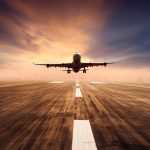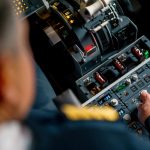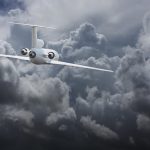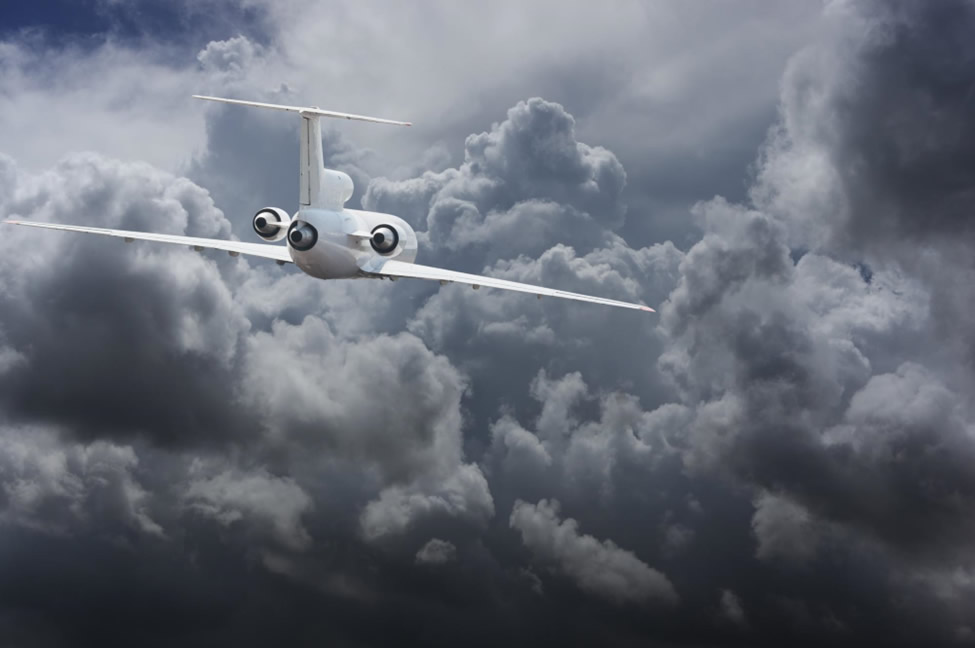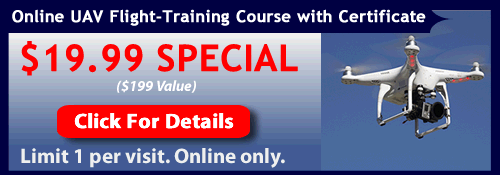chrisjo
Which Commercial Airplanes are the Fastest?
Which Commercial Airplanes are the Fastest?
Modern technology has made it easier than ever to travel the globe. If you are going to another country, you can sit in a comfy seat, eat a hot meal, take a nap, and even enjoy WiFi for entertainment in the sky! As aviation technology continues to improve, the flights are becoming more comfortable and the travel times are getting faster.
Today, we will examine an overview of the fastest commercial airplanes and how they are changing air travel.
Fastest Commercial Aircraft
The Supersonic Era (in the late 20th century) brought the development of the Concorde and Tu-144, which could reach speeds of Mach 2.04. The Concorde was a joint venture between France and Britain, and was impressive because the cruising speed was twice the speed of sound! This aircraft could take passengers from New York to London in less than 3.5 hours.
This cutting-edge technology was impressive, and passengers loved the luxurious cabins. But airlines eventually retired these aircraft because of the limited routes, environmental concerns, and high operating costs.
Now, the most common modern marvels include the Boeing 747-8i (the current fastest commercial passenger airplane), Boeing 777, and the Airbus A380. These planes all offer plenty of space for passengers, while also maintaining impressive speed despite their massive sizes.
Technological Advancements in Commercial Aircraft
How can these massive airplanes move passengers from one place to another so quickly? The many advances in the industry that have improved both safety and efficiency, such as:
- Engine Technology: These jet engines use technology such as turboprops and turbofans, which are much more powerful and efficient compared to airplane engines in the past. Many innovations have been brought into the market to improve materials, combustion processes, and cooling systems – which can increase thrust while also reducing fuel consumption at the same time. As a result, the airplanes can reach higher speeds and stay in the air for longer trips.
- Aerodynamics: The design of the airplane matters to improve airflow and reduce drag. These airplanes are designed with sleeker fuselages and better wing design. One modern technology is the “laminar flow control,” which allows the flight to be faster and more fuel efficient.
- Lightweight Materials: Airplanes need materials that are highly durable and still lightweight at the same time. Examples of modern materials include carbon fiber-reinforced polymers instead of the use of heavier metals. By decreasing the weight of the plane, it allows less fuel to be used and the aircraft can reach higher speeds.
It’s incredible to see how much airplanes have improved over the years. And it’s exciting to think about the possibilities for continued improvements in the future!
– Written by Becki Andrus
What Makes a Great Pilot?
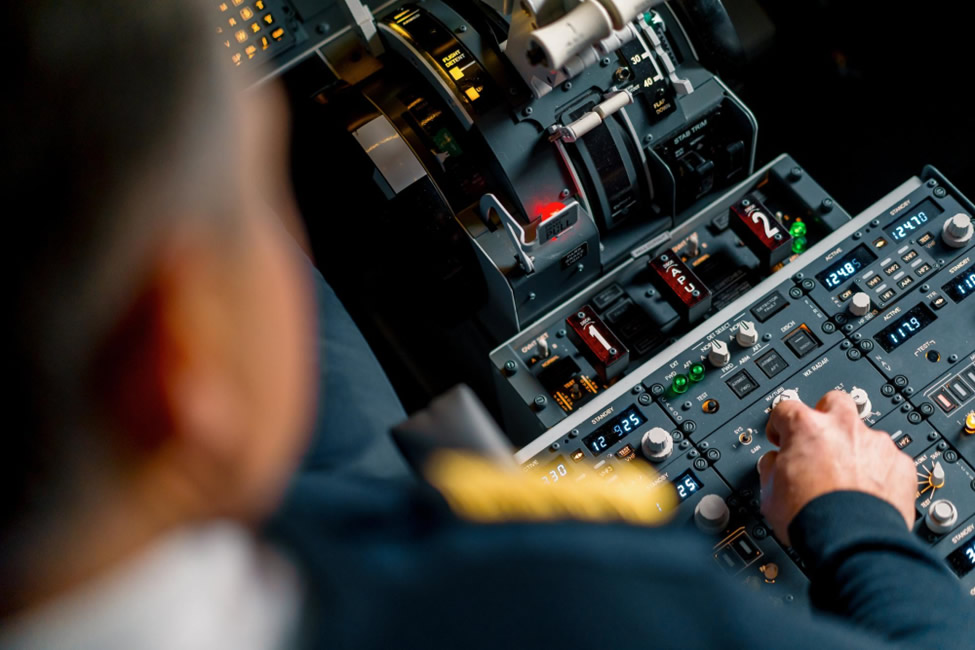
What Makes a Great Pilot?
Not only does a good pilot need to know how to navigate the plane and ensure the safety of everyone on board. But a pilot who excels in their career must combine these technical skills with other traits and qualifications, such as leadership, critical thinking, and the right attitude.
Here are a few traits that make a great pilot stand out from average pilots:
Clear Communication
In addition to communication between two pilots in the cockpit, ongoing communication is necessary with other staff members who are on board. Pilots are also communicating with passengers and air traffic control. Open lines of communication provide essential information about takeoff, landing, and the flight path.
Good communication involves speaking in a way that sends a message of authority and confidence. At the same time, it’s important for a pilot to get to the point, especially when communicating in high-stress situations – such as landing a plane in inclement weather.
This communication ensures that the pilot is sharing their message clearly, but they are also understanding the messages they are receiving.
Staying Calm Under Pressure
While the hope is that scary or difficult situations won’t occur in flight, the reality is that there is always a possibility to experience the unexpected. Examples include:
- Losing communication with Air Traffic Control
- A malfunction in the aircraft
- Medical emergency
- A passenger is threatening or unruly
If a pilot responds out of fear or panic, then it could result in a costly mistake. Staying calm under pressure improves the outcome and allows the pilot to make an informed decision about the best course of action.
Situational Awareness
Flying an airplane requires awareness of many factors at the same time. A pilot must always have a clear understanding of all factors that could impact the flight. They need to know:
- The position of the plane
- Relation to other planes and hazards in the area
- Weather patterns
- Environmental elements and terrain
- Passengers on board
This situational awareness not only keeps the pilot in the present moment, but it also helps them anticipate potential events that might be encountered on the flight path.
Detail Oriented
A pilot must track many small details to avoid dangerous mistakes. When a plane is in the air, even a small error could result in a catastrophic accident, so there is little room for error. Detail-oriented pilots are the best at ensuring safety every step of the way.
Even a small change in trajectory can impact the route, arrival timing, and more. The pilot is carrying the responsibility of bringing the plane, passengers, and cargo to the destination as planned. Being detail-oriented increases the likelihood of a successful, on-time landing.
Decision-Making Skills
As all of these factors come together, it can be summarized in one simple trait: the ability of a pilot to make good decisions. If they have situational awareness, clear communication, and attention to detail, then they have the ability to make the right decisions.
Additionally, a pilot’s past experiences play an important role in decision making. If something unusual happens, then a pilot can refer back to their previous experience to handle the situation in a split-second decision. Years of training and experience are the only way to gain this edge in the cockpit.
– Written by Becki Andrus
Is Turbulence Worse at Different Times of Year?
Is Turbulence Worse at Different Times of Year?
For those who often find themselves soaring through the skies, turbulence is a familiar sensation that tends to elicit a mix of annoyance and unease. But, have you ever wondered if turbulence tends to rear its bumpy head more frequently during certain times of the year, or if it’s a consistent threat? Let’s take a closer look at the science behind turbulence, explore how seasonal and daily factors might influence its occurrence, and ponder whether climate change has a hand in shaping our flight experiences.
Getting to Grips with Turbulence:
Turbulence is simply a natural part of flying, caused by irregular airflow in the atmosphere. It can be set off by various factors such as weather patterns, air currents, and even the landscape below. There’s a spectrum of turbulence, ranging from gentle bumps to more intense jolts, each bringing its own level of discomfort and potential safety concerns!
Seasonal and Daily Swings:
Although turbulence can happen at any time, there are seasons and times of the day when it tends to crop up more frequently. For instance, thunderstorms and the resulting convective activity, which are more common in the summer, often lead to increased turbulence, especially in areas prone to severe weather. Similarly, daytime heating can stir up thermal turbulence, particularly in the afternoons.
Navigating Flight Paths and Regional Nuances:
Certain flight paths and parts of the world are notorious for bumpier rides than others. Areas with mountains, coastal regions, and places with strong jet streams often experience more turbulence. Additionally, flights over the polar regions might encounter extra turbulence due to the unique atmospheric dynamics at higher latitudes. Pilots and airlines are well aware of these factors and factor them in when planning routes and schedules.
The Climate Change Factor:
Climate change is a complex puzzle that affects various aspects of weather and atmospheric conditions, including turbulence. While researchers are still piecing together the specifics, some studies suggest that warmer temperatures and shifting weather patterns could lead to more turbulence in certain regions. Warmer air can fuel stronger convective activity, potentially resulting in more frequent and severe turbulence events.
Tackling Turbulence Head-On:
Despite the challenges turbulence presents, today’s aircraft are built to handle turbulent conditions with ease. Pilots undergo extensive training to navigate through rough patches and use advanced weather forecasting tools to anticipate and steer clear of turbulent areas whenever possible. Plus, technological advancements like turbulence detection systems and real-time weather monitoring bolster flight safety and passenger comfort!
In Summary:
Turbulence may be a natural part of air travel, but its intensity and frequency can vary based on factors like the time of year, time of day, flight path, and weather conditions. While there might be seasonal and regional trends in turbulence, modern aviation practices and technology work hand in hand to minimize risks. As we continue to deepen our understanding of turbulence and its connection to climate change, ongoing research and innovation remain key to ensuring smooth and safe flights for travelers worldwide!
– Written by Jack Vale
What Pilots Want You to Gift Them

So, you’ve got a pilot in your inner circle and you’re on a mission to give them something that’ll soar above every other gift they’ll receive! We’ve curated a list of seven fantastic gift ideas that’ll have your pilot friend or family member on cloud nine. Let’s dive into the high-flying world of pilot-approved gifts.
1. Bose A20 Aviation Headset with Bluetooth from Marv Golden:
Let’s kick things off with a game-changer – the Bose A20 Aviation Headset with Bluetooth from Marv Golden. Offering 30% greater noise reduction than standard aviation headsets, this headset weighs in at just 12 ounces so it’s nice and portable too. With sheepskin cushions and minimal clamping force, it’s the epitome of comfort at altitude. Backed by a 5-year warranty, this headset is any pilot’s dream come true.
2. Custom Leather Flight Jacket:
Every pilot dreams of rocking a classic leather flight jacket, whether they admit it or not! Go the extra mile and get personalized with a custom leather jacket. Embroider their name or call sign for that extra dash of cool.
3. Aviation-Themed Timepiece:
A watch designed for aviators is not just a timepiece, it’s a statement. Look for aviation-themed watches with features like GMT functions and aviation-inspired designs. It’s a stylish way to keep time in two zones.
4. Pilot Logbook:
Help them keep track of their flight hours with a top-notch pilot logbook. Opt for one with customizable sections for different types of flights, ensuring they can record their journeys with ease for years to come.
5. Aviation Artwork:
It doesn’t have to be something they can use in the air! Help them to deck out their living space with aviation-themed artwork. Whether it’s vintage aviation posters or a custom piece of aviation art, it’ll be a constant reminder of their love for the skies.
6. High-Quality Flight Bag:
A durable and spacious flight bag is a pilot essential. Look for one with multiple compartments to keep their charts, manuals, and gadgets organized. Bonus points if it’s lightweight and fits perfectly in the cockpit.
7. Flight Simulator Setup:
For the pilot who loves to practice their skills on the ground, a high-quality flight simulator setup is a game-changer. Invest in a system that mimics the cockpit experience for some serious at-home flight training.
8. Weekend Getaway:
Give the gift of a weekend getaway to a destination with a fantastic airstrip. A chance for them to take a break, enjoy the thrill of flying, and explore a new locale from the sky.
Identifying Different Commercial Planes
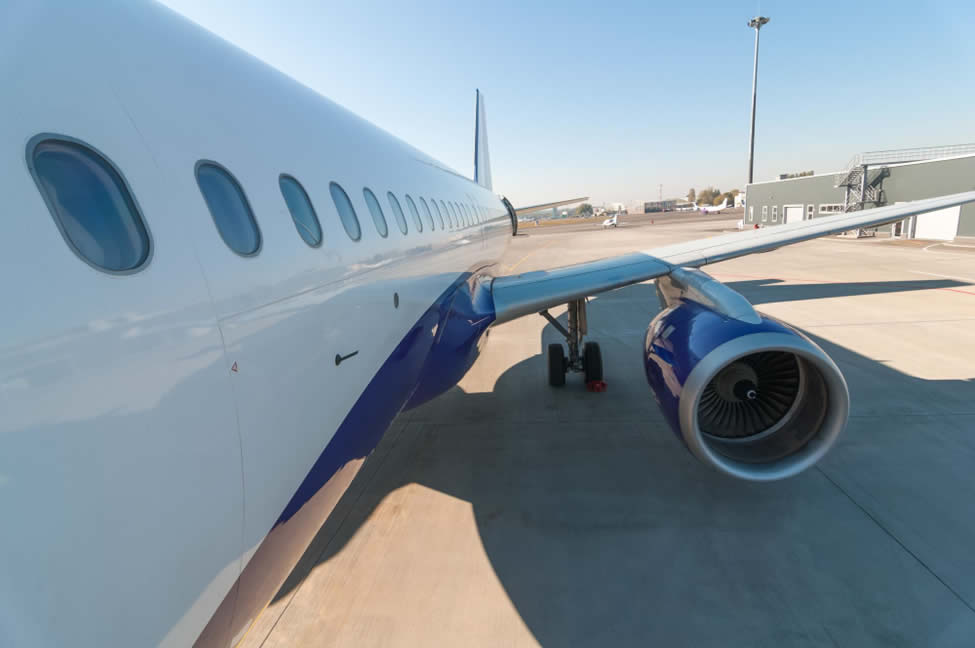
As aviation technology continues to advance, there are many types of planes flying through the skies. Can you identify different planes based on their appearance and features? Whether you are an aviation expert or an airliner-spotting hobbyist, it can be tricky to distinguish between the different kinds of commercial planes.
But, with a bit of practice, you can learn to tell the difference and identify the type of plane that is flying overhead.
Tips for Identifying an Airplane
Whether you are looking to the skies or viewing planes on the ground at a nearby airport, there are distinguishing details that can help you determine the type of aircraft you are seeing:
● Wide-body or narrow-body (size of the plane)
● Design of the cockpit windows
● Shape of the plane’s nose
● How the plane is powered (jets or turboprops)
● Number of engines
● Location of engine placement
● The arrangement of the landing gear
● Number of wheels in the landing system
● Locations and number of doors (entry and emergency exits)
● Design and shape of the tailfin and winglets
● Size of the wingbox
● Location and number of passenger windows
Choosing the Ideal Location for Airplane Spotting
If you enjoy spotting and identifying airplanes, then it’s important that you understand security regulations and restricted areas. Then, you can choose the ideal locations to spot the aircraft without worrying about whether you are violating any rules or laws.
Near airports can be a great place to spot, but there are other locations that can also make sense. Consider visiting aviation airparks, air museums, and airshows if you want the opportunity to see the planes close-up. Plus, these spotting locations are excellent for photo-ops.
Equipment to Help with Airplane Spotting
Make sure to bring the right equipment to help. For example, a good pair of binoculars can be essential to help you see the details on the plane. Don’t forget to bring extra batteries in case they are needed!
If you are anticipating a long spotting trip, then snacks and water will keep you fueled throughout the day. It’s also helpful to keep maps on hand so you can navigate to the correct locations.
With a little bit of practice and the use of spotting guides, you can identify nearly any plane in the area.
Written by Becki Andrus in partnership with Marv Golden Pilot Supplies.
Know before you fly your drone
A Quick Guide to Everything You Should Know Before Your First UAV Flight
I have to admit, patience has never been my strongest virtue, especially when it comes to trying out new tech. That’s why it was no surprise at all when I saw reports of people taking their drones out for a maiden voyage on Christmas morning — before following the proper protocol and getting them registered. It’s hard not to bust out your latest gadget and see what it can do, but UAVs aren’t as innocuous as an iPad — they’re small aircraft, and that means there’s a lot to know before you start those props for the first time.
There are Rules to Follow
Like so many other aspects of life, there are guidelines you must adhere to when flying your drone. Firsts thing first, you absolutely must register your drone before your first flight. There are some relatively sketchy companies out there offering to handle your drone registration for a price — but they’re best avoided. Registration through the FAA costs $5, and their web based process is easy enough to maneuver that you shouldn’t need help.
Then there are the FAA model aircraft operation safety guidelines to follow; the most important of which are:
- Fly below 400 feet and remain clear of surrounding obstacles
- Remain well clear of and do not interfere with manned aircraft operations
- Don’t fly within 5 miles of an airport unless you contact the airport and control tower before flying
Finally, there are numerous drone free zones within the U.S. Flying in any of them can lead to civil or federal charges, so be mindful of where they are. You can see a complete map here.
You Might Crash
It’s unlikely you were a natural the first time you drove a car, and it’s just as unlikely you’ll be able to fly a UAV the first time without some hiccups.
In order to have the best chance of not destroying your craft, start by reading the manual cover to cover, memorize how to initiate the drone’s “return home” system, and update your firmware. Next, enroll yourself in a drone flight training program and learn how to fly from the experts — you may be surprised to find that it’s not as simple of a process as you assumed. And before you do anything, it doesn’t hurt to invest in a little insurance, you know, just in case.
You May Upset Those Around You
Unfortunately, public opinion of UAVs can be surprisingly negative. The media seems to take particular delight in reporting exclusively on the small number of pilots who fly irresponsibly. If you’re ill-fated enough to be ambushed by an angry bystander while flying, here are some steps you can take to defuse the situation.
- Stay calm and collected.
- Land your craft before engaging in a conversation.
- Do not yell, become physically violent, or do anything else to escalate the situation.
- Know the facts about privacy laws.
- Wear a head-mounted GoPro or similar recording equipment as you fly. You never know when that footage may come in handy.
One of the best ways to improve public perception of UAVs — and their pilots — is by being a kind and thoughtful member of the community. UAVs are noisy; if the sound of your drone is disturbing someone’s peace and quiet, fly it elsewhere. If you’re flying over beaches, parks, or hiking trails, try to do it at a time when they are the least crowded. Most importantly, if someone doesn’t want to be filmed, don’t film them.
Flying will always be a joy if you do it responsibly. Follow the FAA guidelines, hone your skills, and mind your manners. Happy flying, friends!
Link Partners:
8 Ways Technology Is Improving Your Health
Register Your Drone FAA Regulations

The new FAA regulations for UAS (drones) now requires you to register your aircraft by January 20, 2016 or face stiff penalties and fines. Drones (UAS) that weigh more than half a pound .55 pounds or 250 grams. For the first month the FAA is offering FREE registration waiver.
See more details about this “Register Your Drone Requirements” on the FAA website:
Drones that must be registered include:
3DRobotics
3DR
3DR Solo (with gimbal)
3DR Solo (without gimbal)
DJI
DJI Inspire 1
DJI Inspire Pro
DJI Phantom 3 Advanced
DJI Phantom 3 Professional
DJI Phantom 3 Standard
DJI P2V+
Helimax RC
Helimax FORM500
Helimax Voltage 500
Parrot
Parrot AR.Drone 2.0 (Elite Edition)
Parrot Bebop
Parrot Bebop
Yuneec
Yuneec Typhoon G Yes
Yuneec Typhoon 4K
Yuneec Typhoon Q500+
Amazon
Hubsan x4 FPV
Hubsan x4 Pro
BH Photo
UDI U818A-1 Discovery HD
UDI U842 Falcon
Drones that do not need to be registered include the following:
Parrot Rolling Spider minidrone from Parrot
Sky Viper s670 Stunt Drone
Syma X5
Syma X5C
Hubsan x4 camera
Hubsan x4 Nano
Hubsan x4 (H107L
Extreme Fliers Micro Drone 2.0
Air Hogs Millenium Falco
Helimax 1SQ No Helimax RC $100 0.07
Helimax 1SQ V-cam No Helimax RC $130 0.07
Helimax 1Si (with camera
Helimax 230Si (with camera)
Parrot Airborne Cargo minidrone
Parrot Airborne Night minidrone
Yuneec Typhoon Q500+
Yuneec Typhoon Q500 4K
For more information on this FAA requirement to register your USS Drones, visit the FAA website for updated information.
Drones Flying Near Airport Regulations
Know the rules and regulations for flying your Drone (UAS) Unmanned Aerial System.
The Federal Aviation Administration (FAA) is working to combat the safety risks posed by drones (UAS) – Unmanned Aerial Systems. There have recently been a large number of incidents and airports are taking measures to increase aircraft safety.
A new system is being considered to protect airports and will encompass protecting a radius of five miles of airports by using a sensor-based radio signal detection system that is currently in the testing phase.
Another option under consideration to tackle the problem could be a geo-fencing system that uses GPS and Radio Frequency Identification (RFID) technology to limit where unmanned aircraft can fly as the agency attempts to protect aircraft.
The FAA prohibits the use of unmanned aircraft within 5 miles of any airport within the U.S. without permission from air traffic control.
The FAA just recently announced new regulations requiring drone registration in an effort to keep track of the record ownership of drone aircraft. The mandatory online registration will apply to owners of small drones weighing more than 0.55 pounds and less than 55 pounds, including drones with on-board cameras.
FAA Announces Small UAS Registration Rule
https://www.faa.gov/news/press_releases/news_story.cfm?newsId=19856
Drone Owners Register FAA Requirement

For Immediate Release December 14, 2015
The FAA announces drone owners must register by February 19th, 2016. Registration is a mandatory requirement that applies to all aircraft.
Drones are expected to be the hottest selling Christmas Gift in 2015 and the FAA estimates thousands of drones will take the the skies.
Be sure to take our online drone course to learn the basics of how to fly your drone today.
The agency expects hundreds of thousands of new units to be purchased during the holidays. The FAA registration is so that UAS owners understand they are to operate the aircraft safely or face stiff fines and imprisonment.
Recently, The Federal Aviation Administration announced that all drone units weighing between 0.55 pounds and 50 pounds must be registered by February 19th, 2016.Drone owners who fly without proper registration after the above date will face stiff fines up to $27,500. There are also criminal penalties from $250,000 and up and or includes 3 years in jail.
The FAA registration is $5, but the FAA is waiving that for the first 30 days to help increase compliance.
The FAA says, “registrants will need to provide their name, home address and include an e-mail address. The online registration system does not yet support registration of small UAS used for any purpose other than hobby or recreation.
Once you complete the FAA registration, you will receive your Certificate of Aircraft Registration/Proof of Ownership a that will generate a unique identification number for the UAS owner, which then must be displayed on your drone.
Registration begins on December 21, 2015 for civilian pilots and hobbyists. Owners may register through a web-based system at www.faa.gov/uas/registration
Star Wars Episode VIII will shoot down any drones
Attack of the Drones! You have been warned.
Star Wars Episode VIII will shoot down any drones that are planning to invade the set and take unauthorized photos.
Drones are the hottest Holiday gift this year and many are gearing up to protect themselves again this threat such as Pinewood studios who is currently under preparation to stop any drones infiltrating the set to take unauthorized photos by taking to the skies to stop the snoopers.
There are a number of counter attacks being planned should a drone taking photos be encountered.
